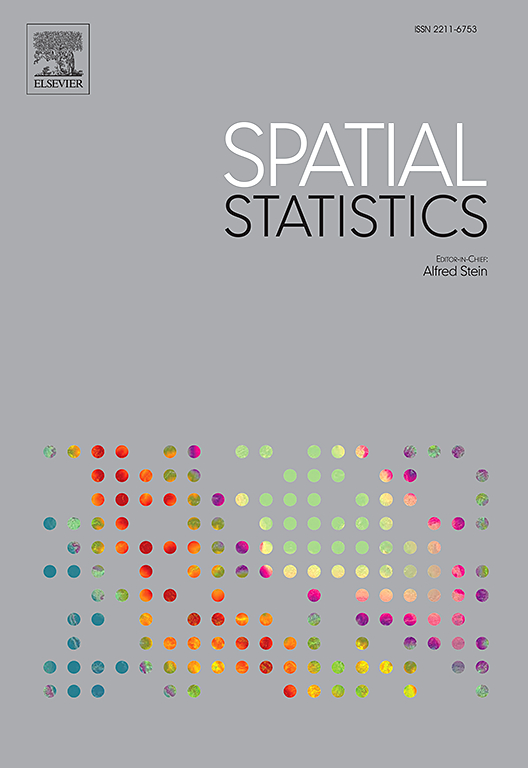A marked sequential point process for disease surveillance: Modeling and optimization
IF 2.5
2区 数学
Q3 GEOSCIENCES, MULTIDISCIPLINARY
引用次数: 0
Abstract
Plant disease surveillance is essential for the management of disease outbreaks that pose significant threats to agricultural sustainability. In this study, we present a novel sequential point process model designed for disease surveillance. The model incorporates self-interaction mechanisms to account for the influence of the process’ history. To analyze the dynamics of the model, we propose new sequential summary statistics that extend traditional point process methods to scenarios where sequential interactions are critical. This model serves a dual purpose: it is employed both to propose novel and efficient sampling designs, and to characterize existing sampling schemes, implemented in real-world situations, through parameter inference.
疾病监测的标记顺序点过程:建模与优化
植物病害监测对于管理对农业可持续性构成重大威胁的病害暴发至关重要。在这项研究中,我们提出了一种新的序列点过程模型,用于疾病监测。该模型结合了自交互机制来解释过程历史的影响。为了分析模型的动态,我们提出了新的顺序汇总统计,将传统的点处理方法扩展到顺序交互至关重要的场景。该模型具有双重目的:既可以提出新颖有效的抽样设计,又可以通过参数推理来表征在现实世界中实施的现有抽样方案。
本文章由计算机程序翻译,如有差异,请以英文原文为准。
求助全文
约1分钟内获得全文
求助全文
来源期刊

Spatial Statistics
GEOSCIENCES, MULTIDISCIPLINARY-MATHEMATICS, INTERDISCIPLINARY APPLICATIONS
CiteScore
4.00
自引率
21.70%
发文量
89
审稿时长
55 days
期刊介绍:
Spatial Statistics publishes articles on the theory and application of spatial and spatio-temporal statistics. It favours manuscripts that present theory generated by new applications, or in which new theory is applied to an important practical case. A purely theoretical study will only rarely be accepted. Pure case studies without methodological development are not acceptable for publication.
Spatial statistics concerns the quantitative analysis of spatial and spatio-temporal data, including their statistical dependencies, accuracy and uncertainties. Methodology for spatial statistics is typically found in probability theory, stochastic modelling and mathematical statistics as well as in information science. Spatial statistics is used in mapping, assessing spatial data quality, sampling design optimisation, modelling of dependence structures, and drawing of valid inference from a limited set of spatio-temporal data.
 求助内容:
求助内容: 应助结果提醒方式:
应助结果提醒方式:


